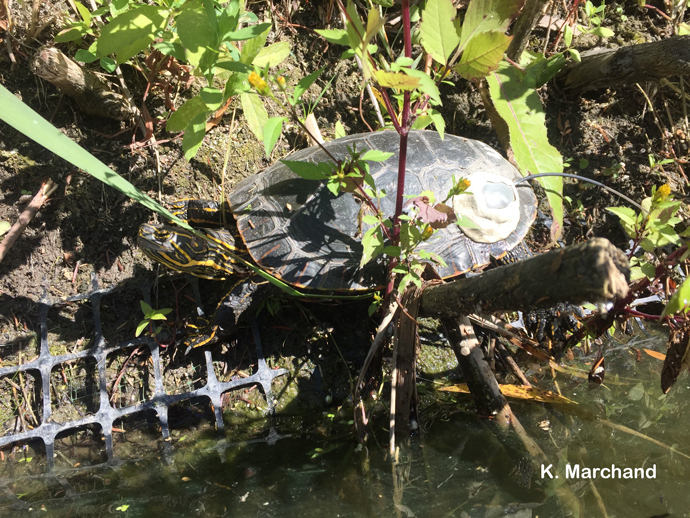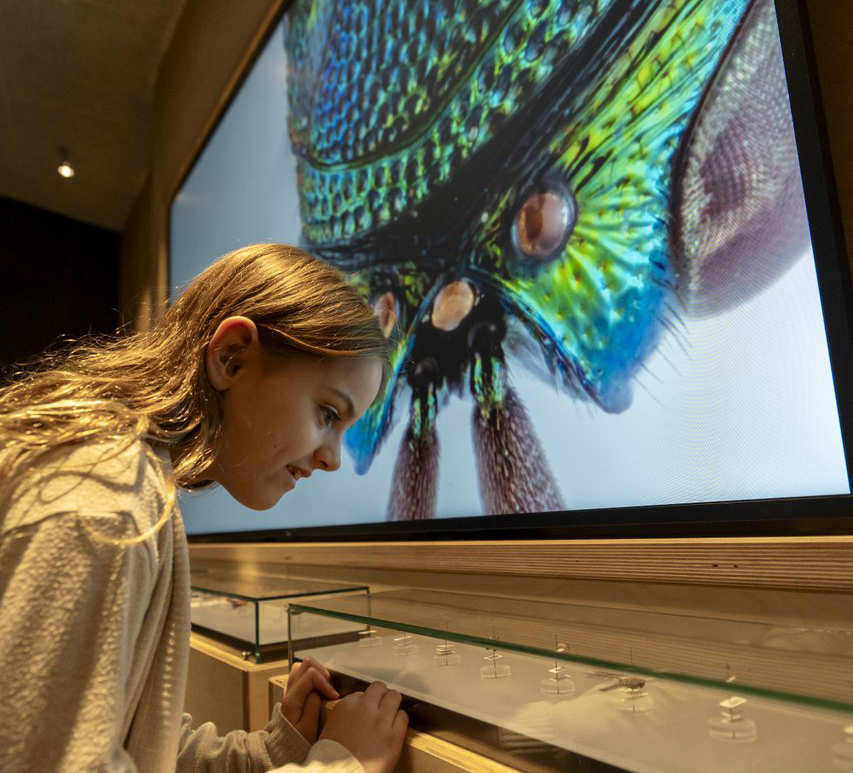And just like that, it’s the beginning of September. Where did this summer disappear to? Part of me has been avoiding this blog because I knew it was going to be focused on winter and I think I am in denial that the summer field season and the first summer of the Wascana turtles project is over.
The end of August marked the last day of fieldwork for my technician Alyssa. With her helping me out all summer we were able to catch 60 turtles, track 23 turtles and record upwards of 800 data points to be used for habitat analysis. Over the next 8 months I will begin analyzing the data collected and observing the turtles movements on a map to help better understand what the turtles in Regina do throughout the summer months.

Alyssa was a trooper, helping me rain or shine.
![]()
Alyssa tracking on Goose Island.
Although the main field season is over, fieldwork will continue into the fall and winter in order to learn as much about the Wascana turtles as possible. This brings me to my question from the public. In the last blog I asked people to send in any questions they might have about turtles or the project. The Museums Association of Saskatchewan (@saskmuseums) were the first to reply with a quite timely question of how do turtles survive a Saskatchewan winter? So the rest of this blog will be focused on answering that question.
Unlike the geese, ducks and migratory birds that flock to Wascana throughout the summer, the turtles can’t fly south to escape our cold winters. That said, it would be funny to picture our turtles hitching a ride on the back of a goose. Unlike the ground squirrels, they can’t burrow holes into the ground on the lawns surrounding Wascana and wait out winter below the frost line. So what do they do??!! Well, quite simply they stay in the water but they can’t be just anywhere. They need to be somewhere that the water stays liquid otherwise they will freeze solid, and then they sit at the bottom of the water column, cool their bodies, slow their metabolism, and wait out the winter. It’s interesting to think that the turtles that live here in Regina spend most of their life chilling at the bottom of the water column. Only a short portion (~4 months each year) is spent soaking up the sun, eating food, and going about their turtle-y business.

Credit: Nick Twyford
One question I ask at each outreach event I’ve done this summer is how do the turtles breathe in the winter? Like us, they need air in order to survive. In the summer this is easy. They just stick their little noses above the water and take a nice deep breath, or climb out on shore and catch some solar rays at the same time. In the winter, there is a major barrier. Not only is it super cold and their little ectothermic bodies are as cold as can be, but there is also ice covering the water surface. Kids answers range anywhere from holding their breath for 8 months (I can barely do that for the length of a pool), using the holes that ice fishers make to poke their heads up (creative!), to having an oxygen tank (unsure where they would get it but children have amazing imaginations). I get the biggest kick out of revealing the answer. Unlike a live presentation I cannot see your reaction, but I know what it will be. Are you ready for the answer? THEY BREATHE THROUGH THEIR BUTTS!

Credit: Animal Pals
How neat is that! It’s not quite the same as the breathing they do in the summer. Right now you and I are both taking nice large inhales in order to fill our lungs followed by an exhale. In the summer the turtles do that too, however in the winter they don’t. Instead, they pass oxygen found in the water across specialized tissue around their cloaca (a.k.a. their butt). This amount of oxygen is just enough for what they need to survive, but it wouldn’t be enough to fill their lungs. It does however enter into their blood system to keep them alive.
Now what exactly do our Wascana turtles do? Well that is what I’m hoping to find out! Currently we have some ideas where they will spend their winter, but no one really knows for sure. Into the fall and throughout the winter I will be determining where they overwinter and discovering more about the conditions that they need in order to survive our winters. Do they like the lake? Do they like the marsh? Do they like both? How deep do they go to survive? Do a bunch of them overwinter together or do they like to spend some time alone? These are some of the questions I’m hoping to be able to answer over the next 8 months.
Now that I’ve finished talking about winter, time to warm things back up again as we still have some time left to enjoy the sun and warmth outside. In order to warm your brains back up, I will leave you with some nice sunny turtle pictures. Remember to get outside and enjoy Wascana! While you’re out there, keep your eyes open for turtles! Sightings can be submitted to turtles@royalsaskmuseum.ca. Should any of you have more questions about turtles and/or the project, feel free to email those as well!! I would love to answer them for you.

Sometimes I let the turtles roam around the canoe while we finish up writing down their information. Some take advantage of an unattended paddle in order to climb to their escape…unsuccessfully.

How many turtles can fit on a single log? As many as possible they say! The smaller turtles climb on the bigger ones in order to squish on as many as possible. Believe it or not, there are 7 turtles in this picture. Somehow the logs never sink.

Suzy enjoys sitting along the bank of the creek to catch her solar rays. When the vegetation was removed she had less to cling to, but luckily a trusty branch sticking out from the soil was enough to hold her little body out of the water.

